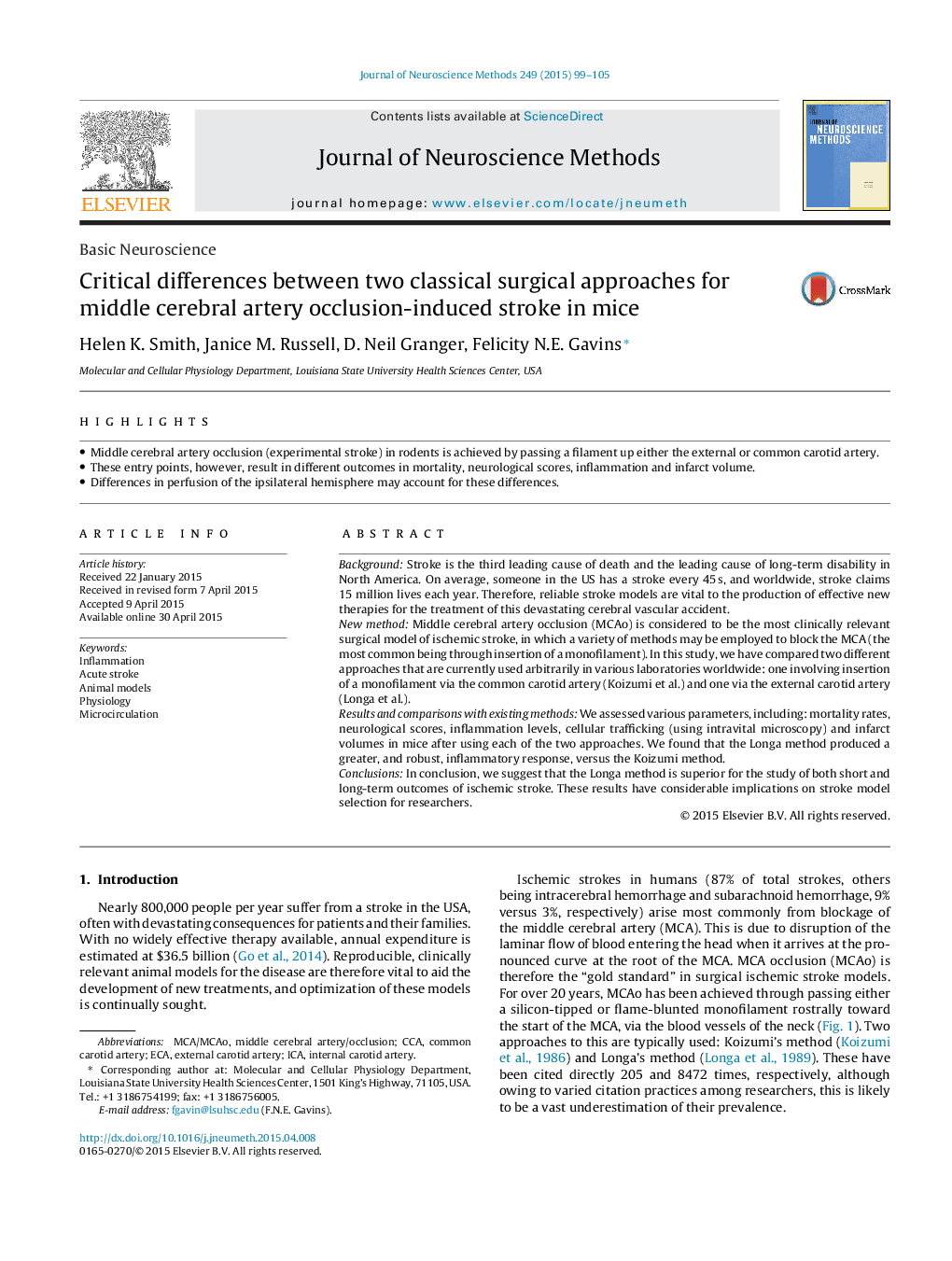| کد مقاله | کد نشریه | سال انتشار | مقاله انگلیسی | نسخه تمام متن |
|---|---|---|---|---|
| 6268234 | 1614620 | 2015 | 7 صفحه PDF | دانلود رایگان |
- Middle cerebral artery occlusion (experimental stroke) in rodents is achieved by passing a filament up either the external or common carotid artery.
- These entry points, however, result in different outcomes in mortality, neurological scores, inflammation and infarct volume.
- Differences in perfusion of the ipsilateral hemisphere may account for these differences.
BackgroundStroke is the third leading cause of death and the leading cause of long-term disability in North America. On average, someone in the US has a stroke every 45Â s, and worldwide, stroke claims 15 million lives each year. Therefore, reliable stroke models are vital to the production of effective new therapies for the treatment of this devastating cerebral vascular accident.New methodMiddle cerebral artery occlusion (MCAo) is considered to be the most clinically relevant surgical model of ischemic stroke, in which a variety of methods may be employed to block the MCA (the most common being through insertion of a monofilament). In this study, we have compared two different approaches that are currently used arbitrarily in various laboratories worldwide: one involving insertion of a monofilament via the common carotid artery (Koizumi et al.) and one via the external carotid artery (Longa et al.).Results and comparisons with existing methodsWe assessed various parameters, including: mortality rates, neurological scores, inflammation levels, cellular trafficking (using intravital microscopy) and infarct volumes in mice after using each of the two approaches. We found that the Longa method produced a greater, and robust, inflammatory response, versus the Koizumi method.ConclusionsIn conclusion, we suggest that the Longa method is superior for the study of both short and long-term outcomes of ischemic stroke. These results have considerable implications on stroke model selection for researchers.
Journal: Journal of Neuroscience Methods - Volume 249, 15 July 2015, Pages 99-105
